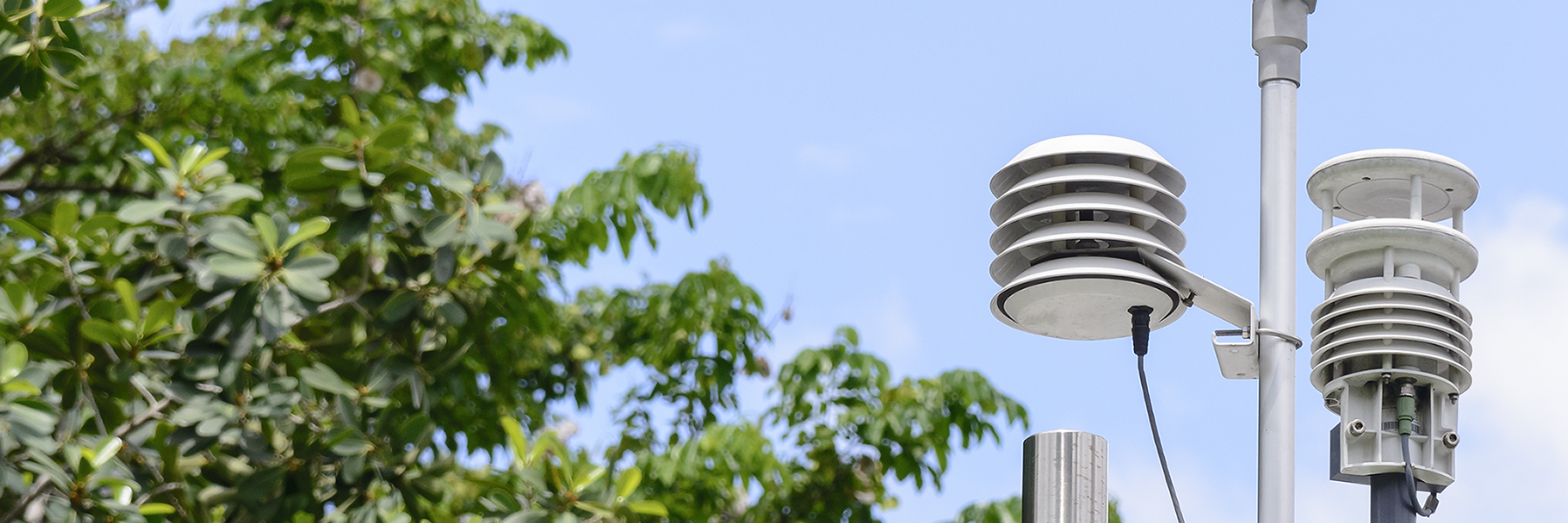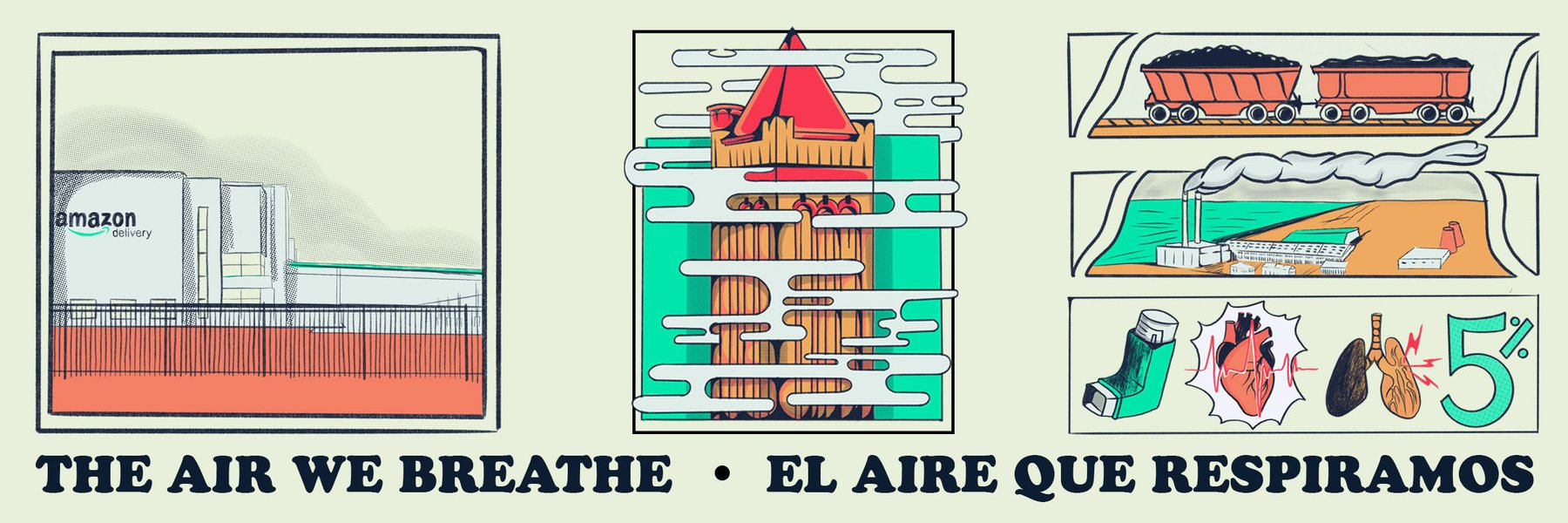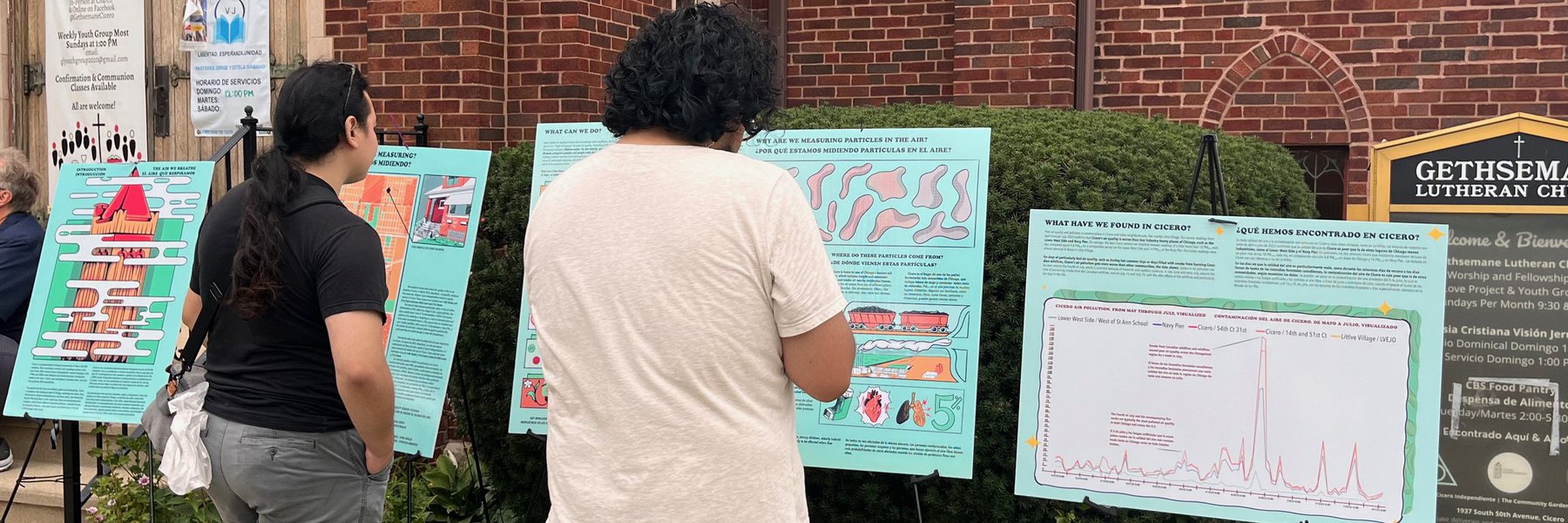Freelance journalist Monica Vaughan has knocked on many doors and even car windows to ask Californians about air quality and their health, but her perspective changed after hearing a question that had bugged one resident for a while.
“I just scan the stories looking for the sentence about whether or not it’s safe to live here. And I can never find that,” Vaughan remembered the woman saying.
That moment reminded Vaughan to bring her reporting back to the questions that people in fenceline communities have, like whether or not even living in their neighborhood is safe for their family.
Vaughan, currently the Interim Engagement Editor for the USC Annenberg Center for Health Journalism, is leading a multi-newsroom investigation into air quality issues in California’s San Joaquin Valley. Her approach with this project has been to marry air pollution data with on-the-ground reporting. One way of doing that has been to answer questions like the one above, telling readers what dangers they are exposed to and how they can protect themselves.
In this air pollution records guide, we’ll help you find documents tracking how your local government regulates air pollution, including initial complaints, sustained violations and monitoring reports. In our previous air quality guide, we focused on air pollution and local environmental and health standards. The public records you’ll be able to find using this guide can tell you what happens when those standards are violated as well as what residents are complaining about. You might also be able to use these documents to help identify what areas of your community are exposed to the most pollution.
Complaints
The forms or portals that allow citizens to file air pollution complaints work in a similar way to those that allow citizens to file complaints for other non-emergency community issues. Depending on where you live, these complaints could be filed through the state, like this phone line and email in Kentucky or through a more local hub, like a city’s 3-1-1 non-emergency call center.
When you’re reading or requesting complaints, pay attention to the whole “life” of the complaint. Consider how your local government logs the complaint and what documents are generated in following up on the complaint. For example, the Kentucky Department for Environmental Protection states that complaints are “logged into the complaints database” and assigned to a field inspector “who documents the violation.” Language like this can lead you directly to the records you’re looking for.
In Chicago, Brett Chase of the Chicago Sun-Times reported on an asphalt plant that has racked up hundreds of complaints about odor and air pollution, leading to $4,000 in city fines related to the complaints.
For the Dallas Morning News, Sophie Austin spoke with residents in a West Dallas neighborhood that had the largest amount of permitted air pollution in the city. There, community members urged the city to reconsider a new air pollution permit for a roofing materials company in light of the facility’s records of complaints.
If your city has a 3-1-1 call center, this request for “Air Pollution, Odor or Dust Complaint Requests” submitted to Chicago 311 is a template that you can start with. You can file your own version of the request here, but be sure to update some of the state-specific language before filing.
It’s important to keep in mind what the Kentucky Department for Environmental outlines in the link above: citizen complaints are only one part of the regulation process. Complaints, without a field inspector documenting the problem or the state issuing a violation, aren’t corroborated. They’re useful starting pointsThey can point you to a problem worth looking into, but it’s up to you to verify the information on the complaint.
Enforcement actions
Enforcement actions are the steps that regional and state agencies take to keep polluters in compliance with pollution laws. There are several types of documents that are part of the enforcement process, including plant inspections, violation notices and fines.
These documents can be maintained at local, regional or state levels. In Michigan, for example, violation and enforcement notices are openly shared on the Department of Environment website, and organized city, company or source ID.
Notices of violations can help you pinpoint problematic facilities, and the amount in fines can help you assess whether the local government actually has the power to stop polluters from flouting the law. When fines are nominal, Vaughan says, facilities may just consider them the cost of operations, like Kiah Collier and Ryan Murphy of the Texas Tribune investigated in A Pass to Poison.
“Looking at violations and fines that polluting industries have to pay are a good way to question the air regulatory agency’s strength of enforcement,” Vaughan said.
You use this request for “All notices of violation and/or notice of penalty” to the Chicago Department of Public Health to start your own request for violation notices.
Another document you may be interested in is a letter that comes before a violation notice, at least in Indiana. You can start your muckraking by filing a similar request to this one.
Lawsuits
Lawsuits are another way you can uncover polluters who may have flouted the law. These are often filed by state agencies or environmental groups. When it comes to air pollution, these lawsuits often center around the Clean Air Act, the federal law that informs many of the state and regional enforcement actions mentioned above. These lawsuits may be brought to your local district court or to state or federal courts, depending on the details of the case.
Sarah Bowman of the IndyStar reported on an Indiana Department of Environmental Management’s lawsuit against a cement facility that had racked up a decade of violations and more than $700,000 in fines.
Air pollution monitoring report
While the other public records in this guide are geared toward how individual facilities are regulated, your state’s monitoring plan can help give you the bigger picture. This type of report is usually issued annually and provides summary data from the air quality sensors monitoring different types of pollutants across the state, like Florida’s Air Monitoring Plans or Illinois’ Air Quality Reports.
These types of reports are concerned with long term trends that determine whether regional areas meet federal standards for air quality. Comparing these reports with complaints from community members or violations by specific facilities can reveal the gaps between the intentions of laws and what residents experience on the ground.
What’s next?
By gathering examples of complaints, violations and lawsuits against polluters, you can help corroborate or clarify individual experiencesexperiences speople’s personal experiences. These public records help you pinpoint what types of air pollution are happening in your community and who is most impacted by that pollution.
These documents won’t tell you much about how polluters ended up in some neighborhoods in the first place though. One of the responsibilities that journalists have, Vaughan said, is to be aware of how environmental planning works. The neighborhoods that are most impacted by environmental hazards are often ones that have been left out of the decision-making process. One of the responsibilities that journalists have, Vaughan said, is to be aware of how environmental planning works because neighborhoods that are most impacted by environmental hazards are often the same communities that have been left out of the decision-making process.
In the next guide, we’ll cover how your local government decides what type of pollution is permissible and where. Subscribe to MuckRock’s weekly newsletter to receive updates as they’re published, or read through some of our other public records guides. If you have a great example of environmental public records reporting you’ve done, reach out at dillon@muckrock.com. We’d love to highlight additional examples of great work.
Header image by Pixel B via ShutterStock.




